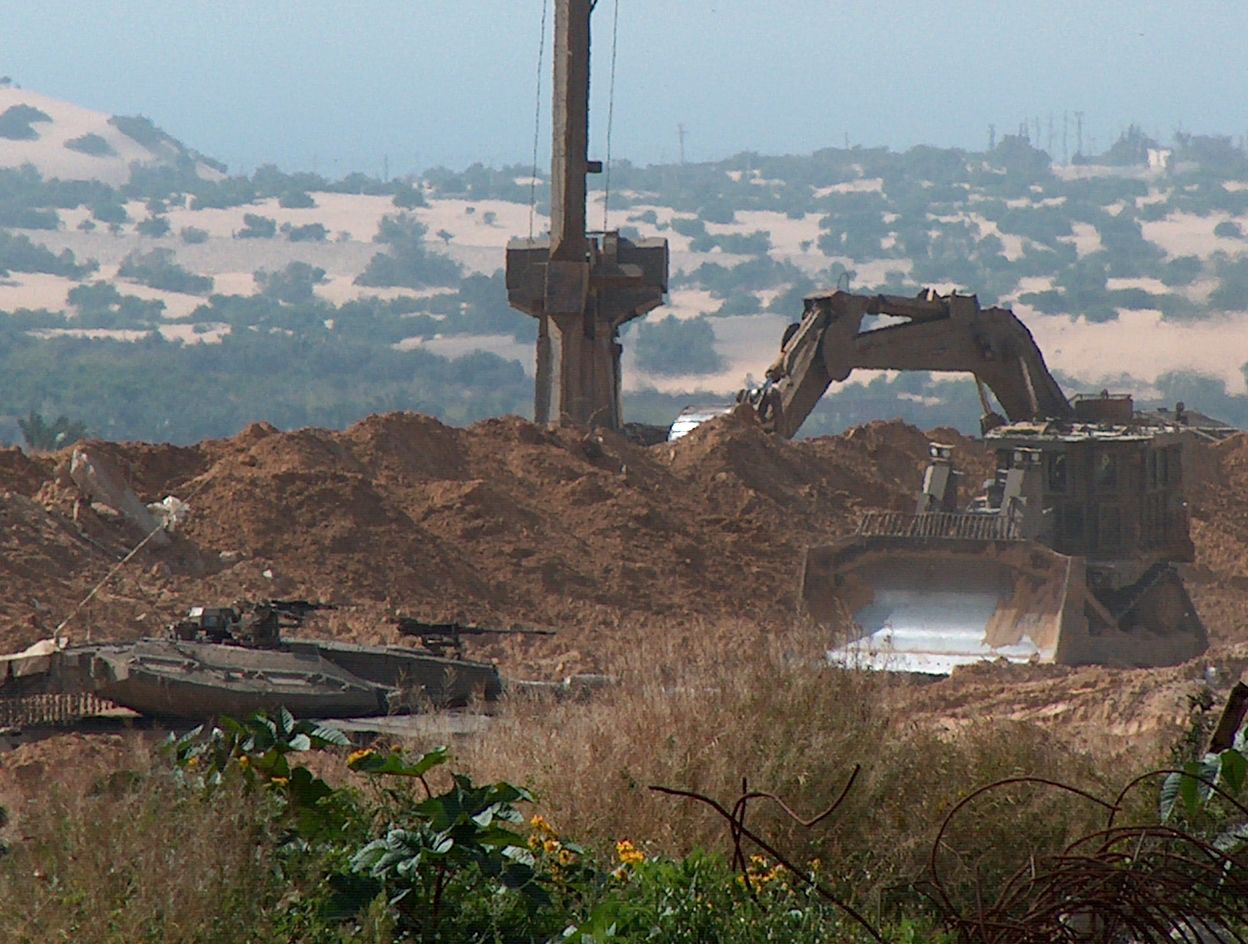
Violation: The sewage flowing from the colony of Yakier pollutes the environment in Wadi Qana.
Date of Violation: 20th of July, 2010.
Location: The agricultural lands and water springs in Wadi Qana located west of the town of Deir Istiya in Salfeet Governorate.
Preface:
Since the beginning of July, 2010, Wadi Qana has been suffering from a continuous flow of sewage and wastewater from the colony of Yakier which polluted the lands and the water springs of the Wadi. The pollution has affected the agricultural lands in addition to grazing fields spread throughout the area.
Pic.2; Sheep grazing in Wadi Qana.
The pollution was caused by the malfunction of one of the manholes in the colony’s wastewater treatment unit which led to the overflow of the untreated sewage into Palestinian lands. The pollution threatens to reach Ein Al Joza water spring which is considered to be one of the 9 natural water springs used by Palestinian herders to provide water for their sheep and their crops.
Pic.3: The malfunctioned manhole in Yakier Colony
It is worth pointing out that Israeli occupation authorities have established in the year 2007 a wastewater network to carry the sewage of the colony of Yakier and other colonies in the area to the Israeli proper for treatment. Yet, the network malfunctions on regular basis without a response by the Israeli authorities despite repeated humanitarian calls outlining the malfunction’s negative effects.
Despite the claims of the Israeli occupation authorities that it cares about the status of the area as a Nature Reserve and that the problem of wastewater flow from the colonies in Wadi Qana has been solved, a mere visit to the area illustrates the multi dimensions of the problem on the ground; the flow of the wastewater from the colonies is still on-going while the expansion of the colonies of Wadi Qana continuous to destroy the unique natural character and the exceptional biodiversity of the Wadi. In addition to wastewater, the flow of raw sewage into the Wadi has turned it from a quite area filled with birds into an area laden with health hazards.
Mr. Musleh Yousef Mansour (45 years old) lives with his family and his 88-yerar old father in the Wadi. He expressed the following to the Land Research Center (LRC)’s field researcher: ‘ Wadi Qana used to be until the near past one of the most beautiful natural areas in the West Bank due to the presence of natural water springs and the different types of unique birds that roamed throughout it. However, the on-going Israeli occupation policies have turned the picture upside down; the colonization process in the Wadi led to land confiscation and water theft. Occupation forces use the designation that that area is “Nature Reserve” as a pretext to prohibit any change or development of the area. As such, these forces consider that farming the land by the Palestinians as a forbidden change in the status of the land. On the other hand, these forces allow the colonist to steal our water resources and our land while dumping their sewage and wastewater on us. The fumes and bad odor caused by the untreated wastewater and sewage have led to the reduction in the number of visitors and the transformation of the Wadi into a place where wild pigs roam freely and destroy Palestinian crops and threaten the lives of Palestinian farmers. In what law is it permissible for colonists to steal and pollute our lands while preventing us (the true owners of the land) from working in it???’
The attacks and aggression of the colonists in Wadi Qana date back to the early days of the Israeli occupation of the West Bank in 1967. Such aggressive acts went beyond pumping pollutants and sewage into the lands of the Wadi as physical beatings and attacks has been on the increase since the creation of a number of colonies in the Wadi. These colonies include Karni Shomron, Ghanat Shomron and Nof Oramein (in the northern parts of the Wadi), Nofim, Yakier (south of the Wadi), Omanwiel (in the east) and Ma’ale Shomron (in the west). The presence of these colonies forms a great ecological and environmental threat to the Wadi as its ecosystem had been deteriorating over the years. The following table from LRC’s database lists the aforementioned colonies along with some relevant information in their regard:
|
No.
|
Colony
|
Date of Est.
|
Built-Up Area
|
Total Area
|
No. of Colonists (as of 2004)
|
|
1
|
Karni Shomron
|
1978
|
1351
|
7339
|
6170
|
|
2
|
Ma’ale Shomron
|
1980
|
216
|
1903
|
549
|
|
3
|
Yakier
|
1981
|
342
|
1364
|
960
|
|
4
|
Omanwiel
|
1982
|
328
|
1909
|
2585
|
|
5
|
Ghanat Shomron
|
1985
|
484
|
N/A
|
N/A
|
|
6
|
Nofim
|
1989
|
248
|
331
|
414
|
|
7
|
Nof Oramein
|
1991
|
153
|
N/A
|
N/A
|
|
TOTAL
|
3122
|
1746
|
10678
|
The sense of loss of personal security stemming from the continuous harassments by the Israeli colonists has negatively affected the agriculture sector in the Wadi; the planted lands have decreased from 10,000 dunums to a mere 5,500 dunums over the years. Most of the lost lands were the ones used to establish colonies on in addition to the lands surrounding these colonies as Palestinians find difficult, if not impossible, to access such lands.

















